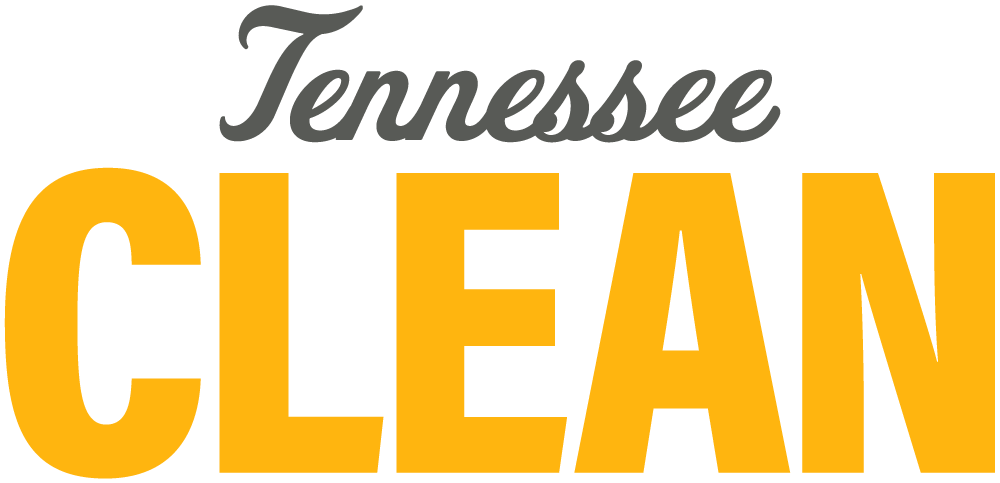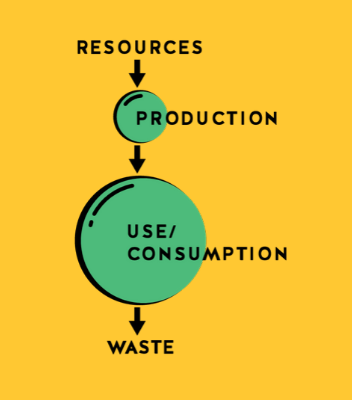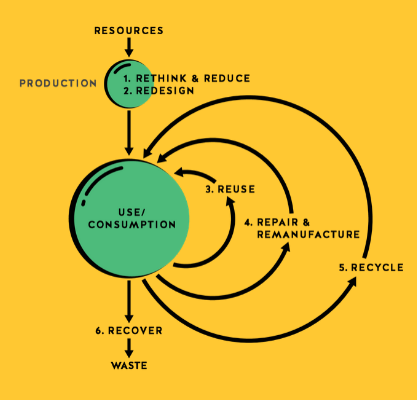
What is a Circular Economy?
Recall, for a moment, a lesson from high school physics: matter is neither created nor destroyed. It can change form, but the same amount of matter always exists. This applies to the world’s manufacturing systems as well.
Globally, we produce a lot of waste. Right now, most products are made, used once, and find their way to a landfill. However, many of these products have the potential to be reused—to change forms—rather than being “destroyed” and wasted.
It’s called a circular economy. A circular economy is a model of production that reduces material use by reusing and recycling materials to keep products in circulation for as long as possible.
Linear vs. Circular Economies
Our current manufacturing economy is largely linear, meaning everything that is produced has a starting point and an ending point. Recycling systems are improving, which means some products are used more than once before they are finally disposed of. However, this system still leads to a large amount of waste.
With a circular economy, however, these items and their value are put back into the manufacturing process through reuse, repair, or recycling. The goals of a circular economy are to reduce waste and conserve resources. Glass and aluminum are both 100% recyclable, meaning they can be reused as new glass or aluminum products endlessly with very little loss of product throughout the recycling process. Some types of plastic, such as PET, can be recycled several times, and new molecular technology is improving the recyclability of plastic products.
A well-designed circular economy provides several benefits:
- Fewer raw materials are needed to create new products
- Less time and energy are required to reuse products than to create new products from raw materials
- Less energy is used, which means less greenhouse gas emissions
- The value of products increases because they are able to be continually reused
The Circular Economy and Tennessee
According to a 2021 report released by Ball Corporation, Tennessee has one of the nation’s worst recycling rates. Tennessee’s recycling rate, or the amount of materials recycled out of the total amount produced, was 22%. For comparison, Maine, which was ranked #1 for recycling, had a recycling rate of 74%.
The Tennessee Cleaner Landscapes for the Economy, Agriculture, and Nature (CLEAN) Act is a statewide initiative working to comprehensively address the state’s litter problem. CLEAN aims to prevent litter and, as a result, would improve circularity within Tennessee’s economy. If passed, the legislation would create a commission comprised of citizens dedicated to finding meaningful solutions for our state’s litter issue, material recovery, and reuse.
There are many things you can do right now to be a part of creating a circular economy in Tennessee.
- Recycle. While recycling alone does not lead to a fully circular process, it is an important step. Ultimately, the goal is to make the initial products in the system easier to recycle so they are less likely to degrade and can be put back in the system again and again as functional products.
- Join Tennessee CLEAN. Whether you’re an individual, business, nonprofit, or other community group, you can be part of Tennessee CLEAN. Individuals can sign the Tennessee CLEAN petition to show state legislators how important this issue is to Tennesseans. Businesses and other groups can join the Tennessee CLEAN Coalition, and serve as another voice championing the cause.
- Spread the word. Statewide change requires statewide support and action. Stay up-to-date with all things Tennessee CLEAN on Facebook, Instagram, and Twitter @TennCLEANact. Know someone who wants to see the end of litter in Tennessee? Let them know about Tennessee CLEAN, and ask them to join you in supporting this landmark legislation.



